Does your grocery bill keep creeping higher no matter how careful you are? You’re not alone. Prices in 2025 have made even basic items feel like luxuries. I used to walk out of the store with just two bags and a $150 receipt. That’s when I decided to crack the code.
Learning how to save $200 a month on groceries isn’t about extreme couponing or eating beans every night. It’s about smart, realistic hacks that fit into your everyday shopping. These are the same strategies I’ve used to slash my monthly bill without sacrificing flavor or variety.
Why This Guide Works
- Real-life tested hacks that anyone can do
- No extreme diets or hours of coupon clipping
- Quick adjustments that make a big difference
- Works whether you shop weekly or monthly
- Helps reduce waste while saving money
What You’ll Need
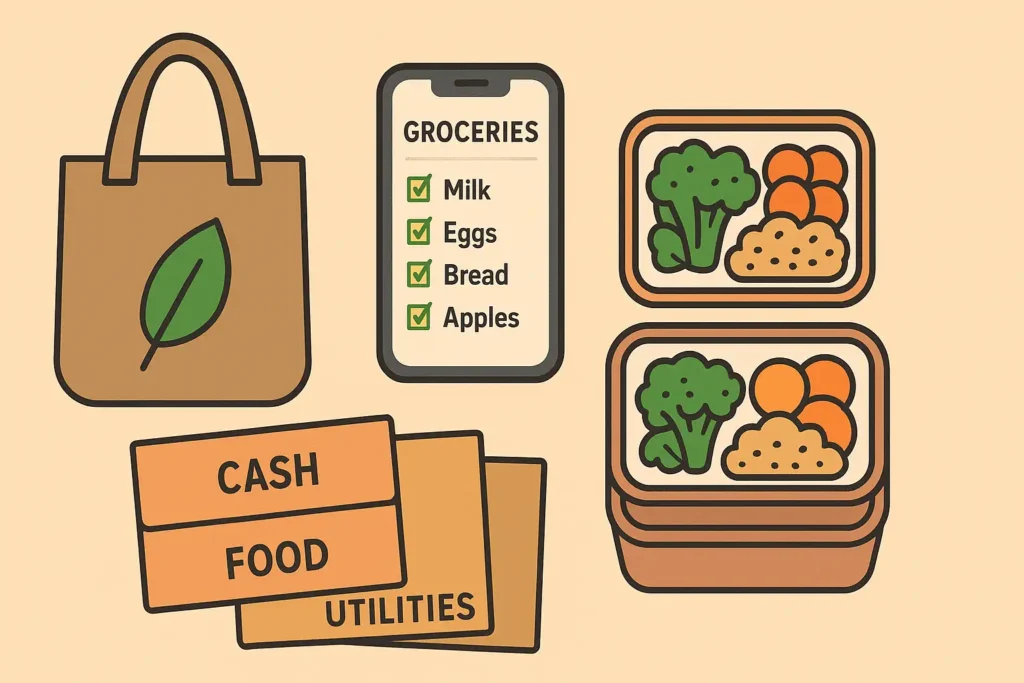
- Grocery list app or simple notebook
- Meal planning template (printable or digital)
- Reusable shopping bags
- Access to store flyers or apps
- A freezer with some space
How to Save $200 a Month on Groceries: Step-by-Step Instructions
Hack 1: Track Your Current Spending
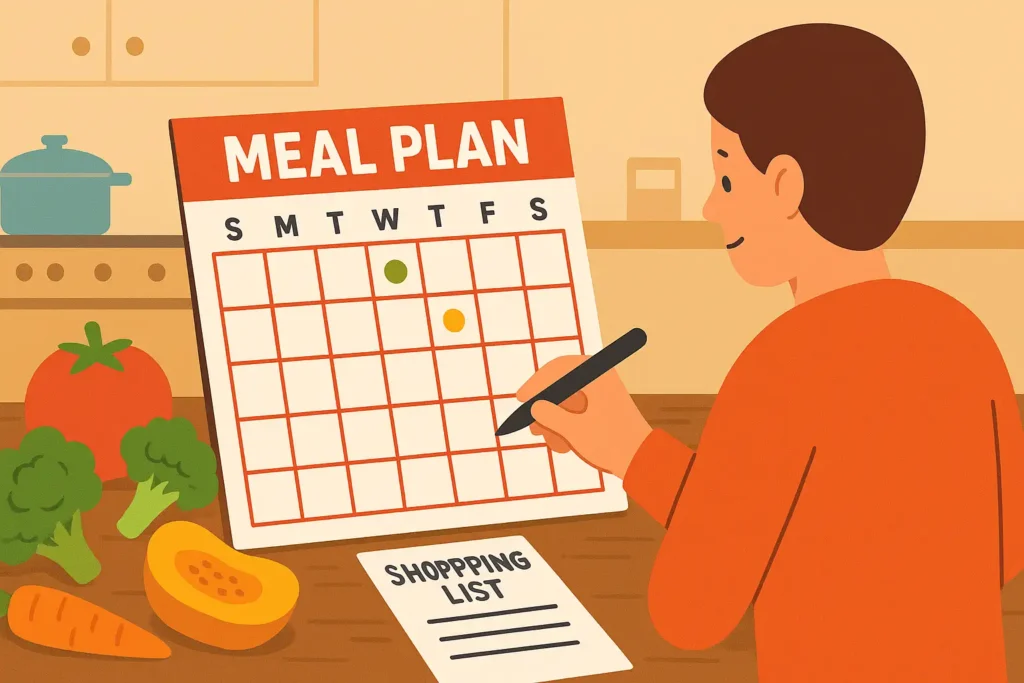
- Start by looking at last month’s receipts or bank statements. Highlight grocery transactions so you see exactly where the money is going.
- Pro Tip: Many banking apps now categorize spending automatically.
Hack 2: Plan Meals Around Sales

- Check weekly store flyers before making your meal plan. If chicken is on sale, build two or three dinners around it.
- It should look just like in the photo below a list of meals tied directly to sale items.
Hack 3: Use a “Core Grocery List”
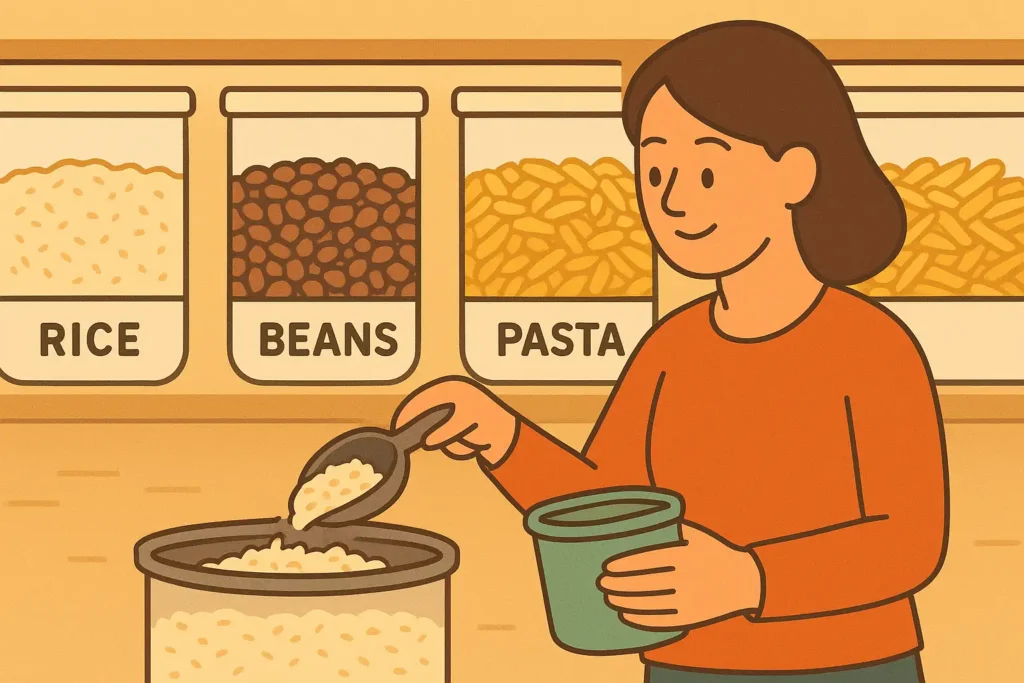
- Create a standard list of affordable staples you always buy: rice, beans, pasta, frozen veggies, oats. Stick to these and rotate recipes.
Hack 4: Cook in Batches
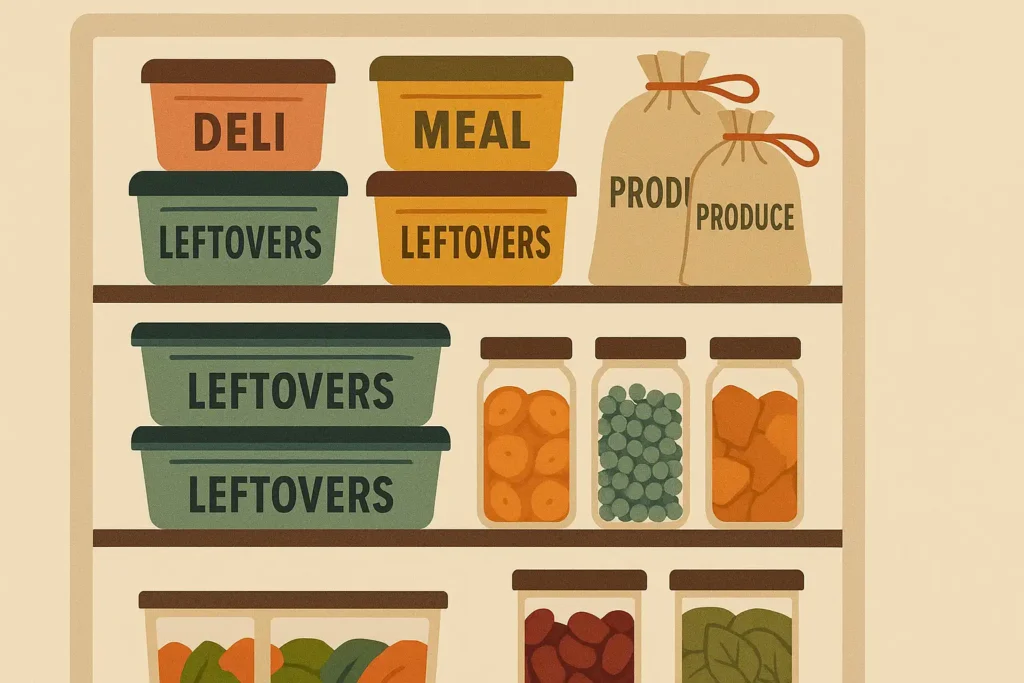
- Double up recipes and freeze leftovers. One pot of chili today means one less dinner to cook (and pay for) later in the week.
Hack 5: Shop with a Full Stomach

- Impulse buys often happen when you’re hungry. Eat a snack before shopping and watch the savings add up.
Hack 6: Limit Processed Snacks

- Chips, sodas, and pre-packaged treats eat up your budget. Replace some with DIY popcorn or baked goods at home.
Hack 7: Use Discount & Cashback Apps
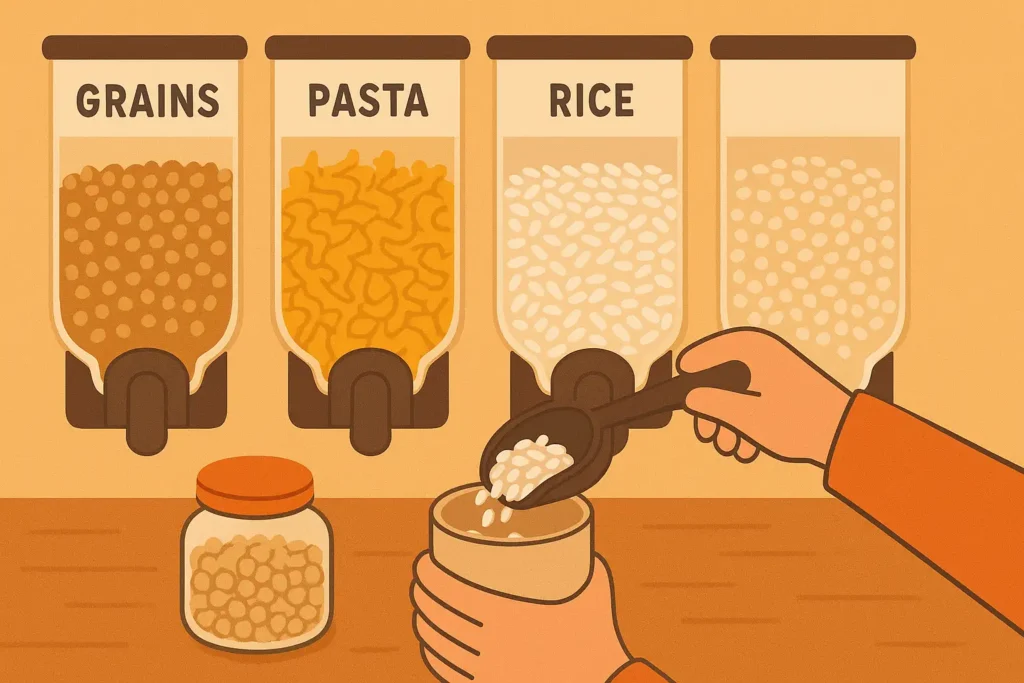
- Download store apps like Ibotta or Rakuten. Scan your receipts and earn cashback without cutting a single coupon.
Hack 8: Buy Generic Where It Counts
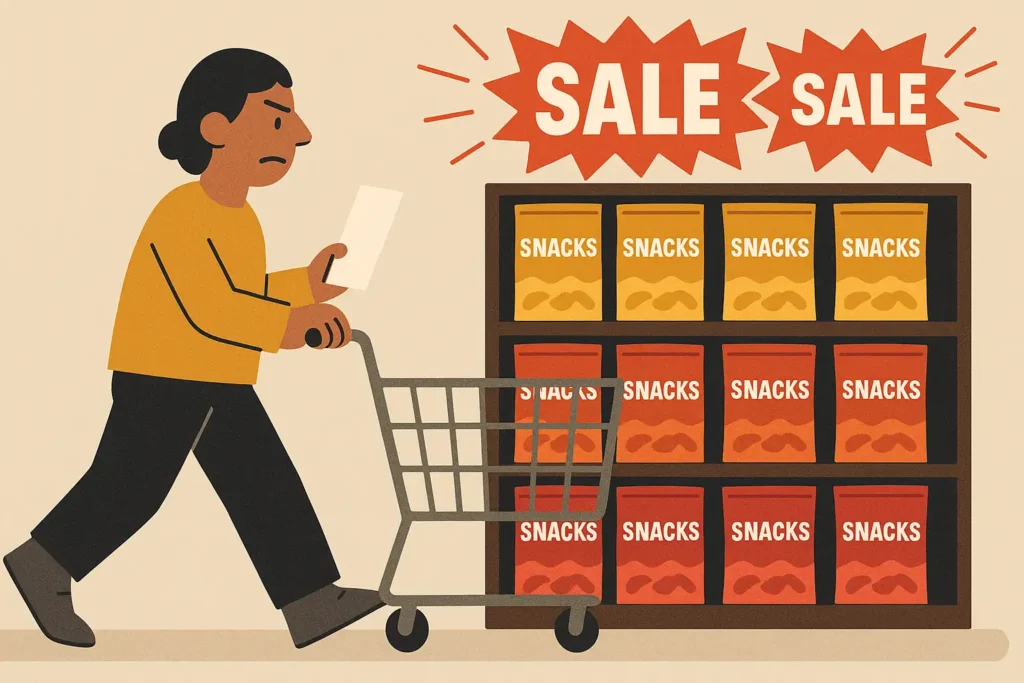
- Most store-brand pantry staples taste the same as name brands but cost 20–30% less.
Hack 9: Freeze and Store Smartly

- Learn to freeze bread, herbs, and leftover sauces. Less food waste = less money wasted.
Hack 10: Stick to a Weekly Budget
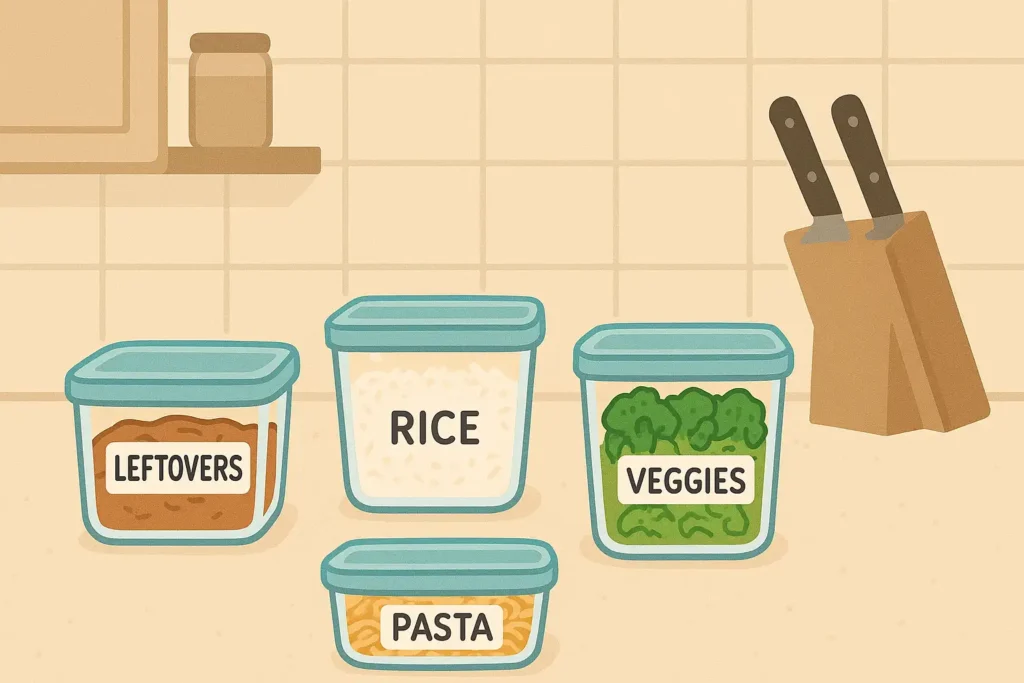
- Decide your weekly grocery cap (say $150). Take cash or use a prepaid card so you don’t overspend.
Pro Tips & Common Mistakes to Avoid
- Don’t shop without a list it leads to random, expensive purchases.
- Avoid bulk buys for fresh items if you can’t eat them before they spoil.
- Don’t skip unit price labels; small packages often cost more per ounce.
- Always check the top and bottom shelves eye-level items are usually pricier.
- Don’t ignore the freezer aisle; frozen veggies are cheaper and just as nutritious.
- Track savings to stay motivated.
- According to the U.S. Department of Agriculture, planning meals and reducing food waste are among the most effective ways to cut food costs.
Variations or Alternative Methods
- Extreme Saver Approach: Try coupon stacking, cashback apps, and wholesale clubs combined.
- Simple Saver Approach: Focus only on meal planning and cooking at home 80% of the time.
- Subscription Saver: Some families save money using grocery delivery subscriptions for consistent discounts.
Safety & Maintenance Notes
- Always check expiration dates on bulk items.
- Freeze meats properly to avoid freezer burn.
- Rotate pantry items using “first in, first out.”
- Watch for food recalls when buying in bulk.
FAQ (Frequently Asked Questions)
Can I do this without special tools?
Yes. A pen, notebook, and reusable bags are all you really need.
How much money can I save by doing it myself?
Most families can save $150–$200 a month with consistent planning.
When should I call a professional instead?
If budgeting feels overwhelming, a financial coach can help set up systems.
What’s the fastest hack for instant savings?
Meal planning around sales. It can save $50+ in a single week.
Is buying organic still possible on a budget?
Yes. Prioritize organic for the “dirty dozen” fruits and veggies, and buy the rest conventional.
Conclusion
Cutting $200 off your grocery bill isn’t a dream it’s doable with smart planning and a few simple shifts. Track your spending, plan around sales, cook in batches, and use apps that pay you back.
Ready to master more money-saving hacks? Explore more practical how-to guides at HowToResults.
















Leave a Review